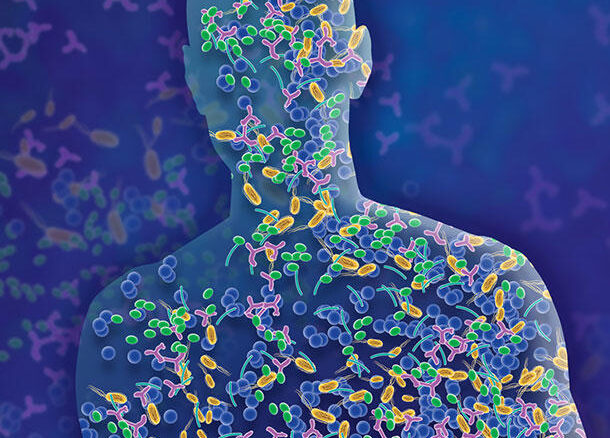By now, many of us have heard about the “microbiome”, the complex web of bacteria, archaea, viruses, and eukaryotic microbes that inhabit our bodies and the environment. Healthy human adults typically harbor more than 1,500 species of bacteria alone, representing millions of microbial genes that far outnumber the human genome. We generally refer to microbes as “germs”, regarding them harmful microscopic invaders that must be fought against so they don’t make us sick through sterilization, disinfection, or pharmacologic treatments. This more limited view of microbes grew from Louis Pasteur’s mid-19th century “germ theory”, which took hold in response to the pre-antibiotic era when bacterial infections were far more dangerous than they are today. At the same time that Pasteur was promoting his germ theory, another microbiologist by the name of Antoine Béchamp argued that microbes didn’t cause infection. He believed that an unhealthy physiological terrain created the conditions for “bad” bacteria to proliferate, and these bad, or pathogenic bacteria, simply thrived in unhealthy tissue.
It turns out they were both right, generally speaking, although Béchamp’s more specific views on microbiology remain controversial and are regarded as unproven. Certain types of bacteria can be harmful if they dominate or invade a vulnerable host (Pasteur’s side of the argument), but the terrain, or the overall health of the individual, plays an equally important role in whether or not these bacteria take hold and proliferate (Béchamp’s side of the argument).
Researchers have identified two major factors that contribute to the susceptibility of the host to infections: “organism factors”, such as the level of virulence and infectivity of a microbe, and “host factors”, which vary depending on the population and can be innate (e.g., genetic) or acquired (e.g., due to having a chronic disease, such as type II diabetes). Interestingly, the view that the terrain plays an equal role in our susceptibility to infection is emerging in tandem with the wellness and integrative medicine movement. Since western medicine has nearly mastered saving lives by managing symptoms, we have begun a rediscovery treatments and practices oriented toward preventing disease, restoring health, and promoting lifelong wellness.
The Microbiome as an Ecosystem
It is often said that microbes outnumber human cells by a ratio of 10 to 1, a belief that has persisted since 1972 based on the speculations of microbiologist Thomas Luckey. However, recent research from Israel and Canada challenges this notion, demonstrating a microbe to human cell ratio closer to 1.3 to 1. Researchers stated that “the numbers are similar enough that each defecation event may flip the ratio to favor human cells over bacteria.” Even if the number of microbes inhabiting our bodies is actually on the same order as human cells, still half of the cells that consist of our bodies are microbes. This raises questions about where our bodies end and the environment begins, and about the role microbes play in our overall health.
It is becoming increasingly clear that our bodies depend on their microbial ecosystems to survive and function. Microbiota residing on the surface and inside our bodies protect us against “bad” microbes, extract and generate nutrients and energy from our food, and play an import role in our immune systems. To illustrate this point further, dysbiosis, or disruption of the normal balance of the microbiome, has been linked to a number of diseases, including obesity, inflammatory bowel disease, Parkinson’s disease, psychiatric and neurological issues, and cancer.
Generally, we assume our first contact with microbes occurs after the rupture of the amniotic sack, but the placenta, amniotic fluid, and meconium—the tar-like first stool that forms in a fetus in utero —have been shown to carry an array of microbes. In mice, certain microbes have been shown to cross the cord while pups are still in the womb. Microbes continue to “colonize” our bodies from the day we are born with vaginal and skin microflora from our mothers. This continues through contact with the environment throughout our lives, creating complex microbial webs that gradually adapt to our ever-changing outside world. Microbial ecosystems inhabit every surface of our bodies, and the microbes differ in species and type depending on their bodily environment, similarly to how species vary depending on the characteristics of different earth ecosystems.
For example, depending on the terrain they find most suitable, species we might expect to find in a swamp compared to species found in mountainous terrain or a desert will vary similarly to how our microbial inhabitants colonize different parts of our body. We find different microbial ecosystems on our exposed skin as compared to our underarm or groin, or those inhabiting our eyes in caparison to our mouth, our esophagus, our small intestine, large intestine, or colon. Microbes are generally said to colonize the “outside” of our bodies, though this notion is being challenged by recent research. In this sense, the digestive tract is one continuous “tube” from our mouth to our anus, and can be viewed as a selectively permeable outer surface of the body.
These microbial inhabitants have a symbiotic, or mutually beneficial, relationship with our bodies. They train the body’s immune system to tolerate the environment by helping it discern between “self” and “other”. Moreover, they protect the body from potentially harmful microorganisms by maintaining protective “films” of balanced microbial ecosystems, or “biofilms”, which can prevent potentially harmful microbes from infiltrating or proliferating. They also play an essential role in breaking down food to release energy and produce needed vitamins. These findings have fundamentally shifted our perspective on microorganisms since the not-so-distant “germ theory” era, which classified all microorganisms as deadly “germs”. Our view of microbes has since elevated to a complex web-of-life necessary for sustaining a healthy connection between ourselves and the environment.
Interestingly, the acknowledgment of needing to maintain a healthy balance in our microbial terrain has coincided with our increasing awareness of human dependence and impact on delicate earth ecosystems. Similarly to the earth’s ecosystems, microbial ecosystems maintain a delicate, dynamic balance that sustains the health of the larger system of which they are a part. The resources and climate of an earth ecosystem determine the number of various inhabiting species. For example, we might expect an increase in mosquito populations after a heavy rain season, followed by an increase in certain fish, bird, or bat populations. Similarly, an increased growth of pondweed in response to chemical fertilizers from an irrigation canal of a nearby cranberry bog might cause a reduction turtle and fish populations. A more extreme example would be an ecological disaster or significant environmental damage that causes certain species to thrive while others might die off completely. Such an event would require a significant amount of time to restore balance in the ecosystem, and depending on the degree of ecological impact, it may take tens, hundreds, or even thousands of years to return to its original state of complexity. Similarly, in the human body, significant damage to our microbial habitats may cause alterations in the microbiome that have lasting effects on our microbiome and overall health.
Similar to earth ecosystems, microbial inhabitants of the ecosystem reflect the terrain of the environment they inhabit. If the terrain is imbalanced, there is an increased likelihood that microbes we associate with disease will take hold and proliferate. However, “bad” microbes that are typically associated with disease, such as Streptococcus pyogenes, are almost always present in the balanced microbial habitat, but their numbers are controlled by the overall ecosystem. This realization is causing healthcare to broaden its lens from the oversimplified though useful concept of “good” vs. “bad” bacteria, inspiring research and treatments focused more on the health of the terrain that significantly influences microbial habitats and long-term health. The more basic lens of “good” and “bad” bacteria is useful when dealing with potentially life- or limb-threatening infections, but has less utility in the world of preventing disease, restoring health from chronic disease, or maintaining long-term wellness, where systems-wide balance must be gradually restored through long-term treatment and lifestyle practices.
Reassessing Antibiotic Prescription Standards
There has been a recent push in medicine worldwide to reassess standards for the prescription of antibiotic drugs, which are used to kill bacteria or keep them from reproducing. Similar to macro-ecosystems of the earth, micro-ecosystems are susceptible to ill health or even collapse if the terrain becomes imbalanced or infiltrated by a particularly virulent, or harmful, microorganism. In the world of medicine, antibiotics might be thought of a weapon of microbial mass destruction. Our microbial ecosystems, like earth ecosystems, are delicate and take time to develop. Antibiotics are powerful medications. If a person is experiencing a potentially dangerous or life-threatening bacterial, fungal, or certain parasitic infections, then certain antimicrobial medications might be necessary. However, research has shown that antibiotics have become a go-to drug class for conditions that can often be treated more effectively with other less powerful, more nuanced methods directed at restoring terrain health.
A recent study published in the Journal of Antimicrobial Chemotherapy estimated that antibiotics were prescribed in about 101-million visits nationwide in one year, including 62-million prescriptions of “broad-spectrum” antibiotics, which are capable of killing multiple types of bacteria. However, more than 25-percent of the broad-spectrum antibiotic prescriptions were useless because the infection for which they were prescribed was caused by a virus, which cannot be treated with antibiotics.
Another study assessed the efficacy of treating children with ear infections with antibiotics. Children prescribed antibiotics for acute otitis media (AOM), a painful infection of the air-filled space behind the eardrum (the middle ear), suffered double the rate of adverse effects compared to children in the study who took placebos. The difference in outcome for those children in the study who took antibiotics compared to those who did not was almost negligible, meaning the children who did not take antibiotics recovered from the ear infection just as quickly as those who did. Some scientists counter that children who take antibiotics run lower risks of secondary infections such as meningitis or mastoiditis, a serious infection of the angular bone located behind the ear. While this makes intuitive sense, researchers were unable to determine if this is true. The study also found that in high-income countries, most cases of AOM spontaneously remit without complications. The overall impression of the researchers who conducted the study was that the benefits of antibiotics must be weighed against the possible harms: for every 14 children treated with antibiotics, one child experiences an adverse event such as vomiting, diarrhea, or rash due to disrupted gut flora that would not have occurred if the antibiotic was withheld. “Gut flora” is another way of saying “intestinal microbiome”.
Disrupting microbial ecosystems in our bodies can have harmful effects. Clinicians and patients must take into the account the long-term impact of antibiotic overuse, which has been linked to diseases later in life, such as autoimmune disease, chronic digestive problems, and asthma, among others, and can make some diseases more difficult to treat or lead to antibiotic resistance. Antibiotic resistance kills an estimated 700,000 people per year worldwide and some experts expect that number to rise to 10 million by 2050.
An Integrative Approach for Improved Outcomes
As the age of integrative medicine and systems science continues to evolve rapidly, we are seeing a resurgence of the art of medicine oriented toward disease prevention, health restoration, and wellness promotion. Thankfully, medical research is beginning to delve into the mechanisms involved in maintaining long-term health, which is popularizing diagnosis and treatment models that view the human being from a holistic perspective. Despite continued defamation of natural medicine by some medical organizations, there is nothing wrong with terrain-oriented health promotion treatments and practices when they are used appropriately. The overuse of antibiotics is one of many examples of the misuse of life- and limb-saving therapies when a nuanced approach oriented toward addressing the terrain is more appropriate, such as diet and lifestyle modification, botanical medicine, hydro-physiotherapy, rest, mind-body practices, and others. All types of clinicians, whether working with allopathic, osteopathic, naturopathic, chiropractic, or other alternative professions, must be trained to discern between when a patient needs acute-oriented treatments and when they need terrain-oriented treatments, as using one approach when the other is more appropriate can have harmful effects. Often times a combination of approaches yields the best overall results. The more that clinical professions can learn from one another, celebrate each other’s individual strengths, and collaborate in an integrative healthcare model, the better off patients will be.



